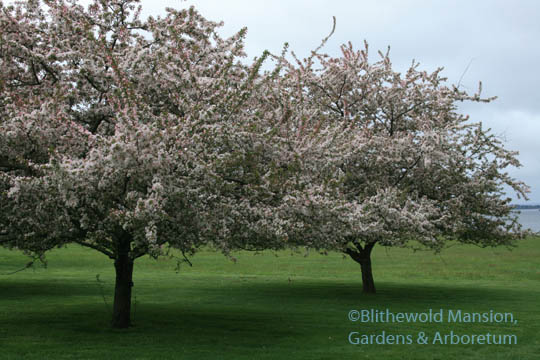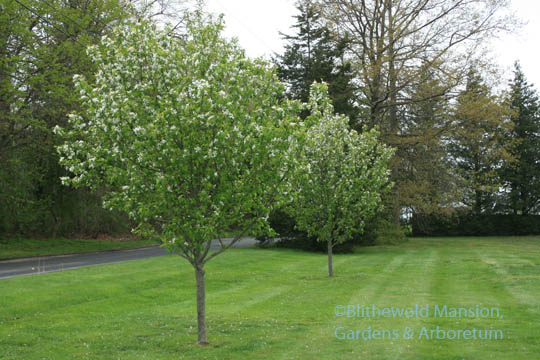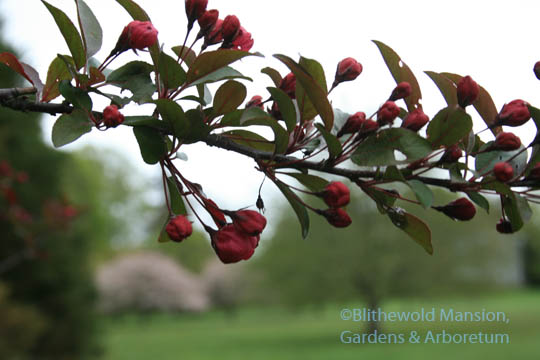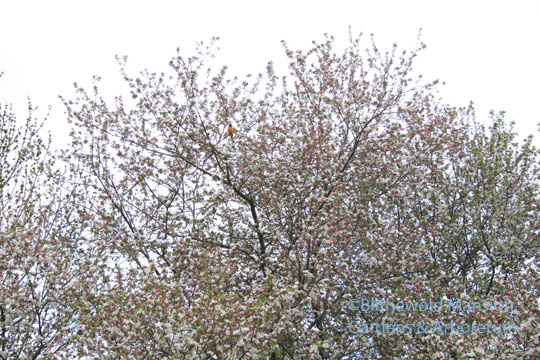When pink and orange is everyone’s favorite color combo
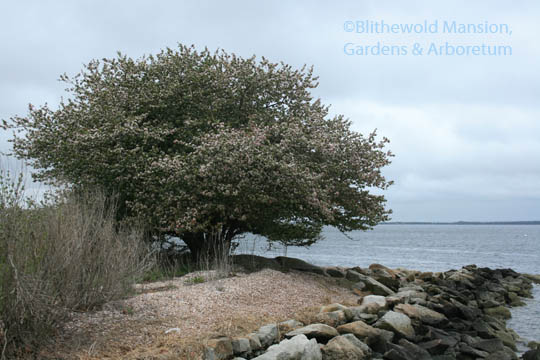 Yesterday a visiting friend and fellow blogger asked me, “What’s your favorite thing blooming right now?” and with very little hesitation (it’s best to answer that sort of question as quickly as possible) I answered, “Crabapples.” Despite having an easy dozen other answers to that question on any given day, crabapples are on the front of my mind right now for a couple of reasons.
Yesterday a visiting friend and fellow blogger asked me, “What’s your favorite thing blooming right now?” and with very little hesitation (it’s best to answer that sort of question as quickly as possible) I answered, “Crabapples.” Despite having an easy dozen other answers to that question on any given day, crabapples are on the front of my mind right now for a couple of reasons.
One is, I’ve been wanting to buy one for my own garden ever since I started paying a mortgage and am still trying to make up my mind about which one to get. At Blithewold we have a grove of three gorgeous Malus floribunda that are almost wider than they are tall and very dense. We also have a fairly recently planted orchard of Malus ‘Dolgo’. According to Dirr, these will be biggies (30-40′) with a more open branching structure. Our ‘Prairifire’ is still young (destined to be 15-20′ tall and wide) and has gorgeous deep raspberry buds and blooms. (Love that one…) But probably our most beautiful crabapple of all is the ancestral tree at the water’s edge. Nothing is more photogenic than that tree in full bloom.
Do you have a favorite crabapple?
The other reason crabapples are on my mind is because when they bloom is also when the Baltimore orioles come back (-the birds, that is. The baseball team won’t be at Fenway again until next week.) I love hearing their call – louder than the spring chorus of lawnmowers – and seeing their bright orange breasts flashing and clashing against all that pink. I’m not sure what they work on in the crabapples – they are nectar sippers – but they also eat insects. As a matter of fact, they are one of the best consumers around of our most destructive insects and caterpillars. Don’t bother spray because the orioles will be happy to eat all sorts of things like fall webworm, gypsy moth larvae, tent caterpillars, potato beetles, scale, and the sawfly larvae that make lace out of rose bushes.
Male orioles make the trip up from Central America, Mexico, etc a few days before the females in order to stake out their territory and they often come back to the same place every year. And the females construct the nest, which is a perfect illustration for the nightmarish lullaby we all grew up with. (Remember, “Rock-a-bye baby, in the tree top. When the wind blows, the cradle will rock…”?) They suspend a woven pocket-like bassinet miles off the ground at the ends of branches. Gail spotted an old one blowing around high up in a Norway maple this winter – much too high up for a picture, alas. The birds go quiet after mating but keep your eyes peeled – they’ll be eating serviceberry and cherries as well as caterpillars. And keep your ears tuned: sometime in August up until they leave in September, the males sing again.
Did you happen to notice when the orioles came back too? (Here it was Friday the 6th. Click on the photo for a closer look.)

